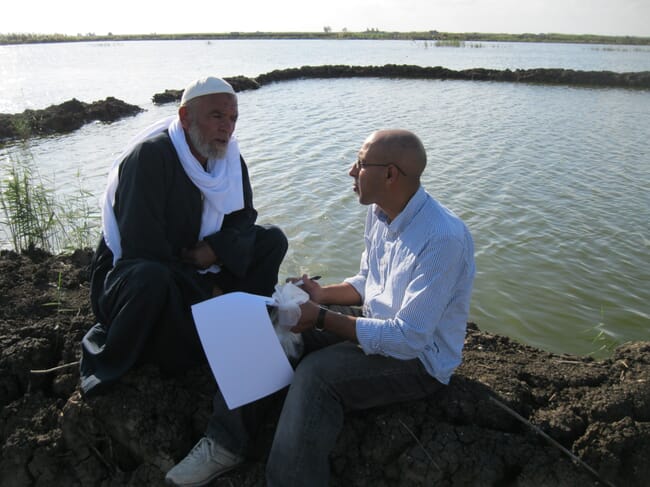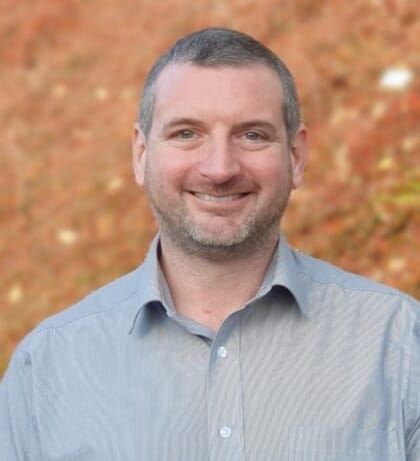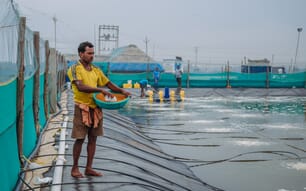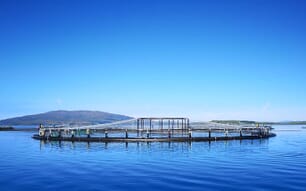
Dr Andrew Desbois and Dr Mahmoud Eltholth, two of the lead authors of a new paper on the subject, explain to The Fish Site how researchers and farmers are working together to achieve this goal.
Can you give a very brief overview of the scale of Egypt’s tilapia farming sector?
Aquaculture in Egypt is a major success story – Egypt produces more aquaculture products than any other country in Africa by a wide margin. The sector has undergone considerable expansion in recent decades, driven by the development of privately-owned hatcheries and feed mills and Egypt produced 1,051,444 tonnes of tilapia in 2018. The key is to maintain this success moving forward, thus securing a nutritious source of food and maintaining livelihoods.
What are the main production methods and the key challenges facing the country’s tilapia farmers?
The main production method is in open large earthen ponds, almost all of these are operated on a semi-intensive basis. The main challenges are maintaining water quality, the cost of feeds, ensuring a good price for the product and mortalities.
Has the use of antibiotics increased in Egypt’s tilapia sector in recent years and, if so, why is this the case?
Antibiotics are used in tilapia culture and, like elsewhere, these key drugs are important tools to maintaining animal health and welfare that must be used appropriately to ensure their effectiveness in the long-term. Not unlike many countries, figures on antibiotic use are difficult to obtain, even in human clinical use. At best, the data is often patchy. Anecdotal accounts from experts in the field suggest antibiotic use in tilapia is increasing, but there is no primary or official data to support this claim. Regardless of the quantities of antibiotics being used, the aim of the project is to reduce use – even if the total use is already low.

What are the main bacterial challenges facing tilapia in Egypt?
There are several key types of bacteria that can cause problems in tilapia in Egypt, including opportunistic pathogens like Aeromonas spp., Streptococcus spp., Francisella noatunensis and others. These bacteria may cause infections as water quality deteriorates and this detrimentally affects the condition of the fish and their immune status, making them more susceptible. Antibiotics are used to treat bacterial diseases, but the lack of diagnostic methods and capacity available to fish farmers can mean that antibiotics are applied to prevent mortalities happening for uncharacterised reasons.
How did this latest project come about?
The paper reports results collected as part of a project funded by the Medical Research Council (MRC) in a call aiming to address the global problem of antimicrobial resistance (AMR). Antibiotics are antimicrobials and antibiotic use in aquaculture may contribute to the global burden AMR, but this connection remains poorly investigated. Steps to reduce antibiotic use in all types of farming (and in the clinic too) are a good way to reduce the burden of AMR, which in the worst case leads to ineffectiveness of antibiotics to treat infections.
The MRC award built a consortium of experts to investigate ways to reduce antibiotic use and tackle AMR in aquaculture. The consortium included colleagues from the Institute of Aquaculture, Royal Veterinary College, London, London School of Hygiene and Tropical Medicine, the International Livestock Research Institute (Ethiopia), WorldFish (Malaysia), Chattogram Veterinary and Animal Sciences University (Bangladesh), Research Institute for Aquaculture No.1 (Vietnam) and Kafrelsheikh University (Egypt). The project focused on two major producing countries in global aquaculture, Vietnam and Egypt, and it is the findings from Egypt that are reported in our latest paper.
What inspired you to set up an AMR-related workshop in Egypt?
Egypt is a major success story for aquaculture and produces more product than any other country in Africa. So, where better to start? The tilapia sector has faced many challenges over the last 10 years and there is a need to make sure it remains productive in the long term. Disease problems, such as those caused by bacterial pathogens, often become more problematic as production intensifies. Not unexpectedly, and this happens everywhere antibiotics are used, there have been a small number of reports of antibiotic-resistant pathogens in fish and fish farms. Working together with the sector, we sought to understand drivers of antibiotic use so to identify ways to reduce the need for antibiotics and the potential for resistant pathogens to become a more serious problem.
What level of engagement did the workshop generate?
The workshop was a great opportunity for academics, farmers, third-sector organisations and allied support industries to meet and to discuss challenges and opportunities for the aquaculture sector in Egypt. We also conducted a follow-up survey to obtain responses from a greater number of stakeholders who were unable to attend the workshop. It was a really high-energy event with lots of discussion – the enthusiasm from the workshop participants was amazing and the shared passion in seeking ways to reduce antibiotic use was quite something to be part of. A key motivation for engaging with stakeholders “on the ground” was the recognition that it is the farmers themselves who will likely be most impacted by policy and practice changes aiming to reduce antibiotic usage, and it is vital to hear their voice early on in a process regarding the perceived feasibility and acceptability of any proposed interventions.
What are the particular “hotspots” for antibiotic use and why?
Antibiotics are used at various times in production including at the hatcheries and the grow-out farms. So, these are places where resistant bacteria may be selected. Collecting better data on the precise amounts and types of antibiotics used in the future will allow for a deeper understanding of their usage and facilitate informed decision-making for the most effective points to intervene to bring about reductions in use and the best ways and means to achieve this.
How receptive were individual farmers to the principle of reducing their antibiotic use?
Antibiotic use implies there is a disease, which is not good for any farmer. Hence, farmers in Egypt are very keen to explore cost-effective ways to reduce outbreaks of disease and thus the need for antibiotics. The farmers are very flexible, dynamic and imaginative people, who are open to new approaches that improve their farming operations.
What – did the workshop members conclude – are the most realistic alternatives to antibiotics open to Egyptian farmers should they be confronted by bacterial challenges?
At the moment there are no real alternatives to antibiotics when treating fish stocks that are already infected by bacteria. But one of the major challenges is identifying that the problem being faced is caused by a bacterium and not caused by another factor, and this stems from a lack of diagnostic capacity, which is not uncommon across the world. There was a strong feeling amongst the workshop participants that probiotics were a promising technology to prevent disease outbreaks. Indeed, in future, probiotics are predicted to play a part in reducing disease burden in aquaculture globally, not just in Egypt.
What option do you see as being the most promising?
Maintaining water quality and better feed management are two key areas where workshop participants felt changes could have most impact to reduce disease outbreaks and therefore the need to resort to antibiotic treatments. One of the key challenges in the tilapia sector in the Nile delta region is that much of the water used to fill the culture ponds and for water exchanges comes from canals that drain wastewater away from agricultural crops. This water may contain sediment, as well as chemical and microbial contaminants, none of which are particularly welcome in water used for culturing fish.
How has the workshop helped to disseminate these alternatives and have the levels of antibiotic use changed much since the event?
The workshop was not aimed so much at disseminating information on alternatives to antibiotics, rather it was to hear from stakeholders on what alternatives they already used or felt might work in future, especially to prevent diseases. Still, some future trials would usefully assess the effectiveness of some alternatives to antibiotics for preventing disease outbreaks and reducing the need for antibiotics, such as probiotics, especially those already used by the farmers. This would mean that effective products and approaches could be implemented more widely, after appreciation for their costs and benefits.
What are the other most important issues emerging in Egypt’s tilapia farming sector?
- Water quality: especially in those areas where the irrigation law only permits fish farmers to use agriculture wastewater.
- High production costs: due to the high costs of inputs such as feed, fuel and others.
- Low market prices: due to the present lack of export market opportunities and fewer added-value options, which means farmers must sell their fish soon after harvesting, even when the price is low, such as when supply is high.
- Lack of affordable on-farm diagnostics to support quick decision-making on how best to tackle a problem.
In our next steps, we will engage with policymakers in the country to share our findings and then work with them to identify the best ways to support the aquaculture sector in reducing antibiotic use. This should align with the country’s Antimicrobial Resistance National Action Plan, which are plans drawn up by every country in efforts to address the unfolding global crisis of AMR.




